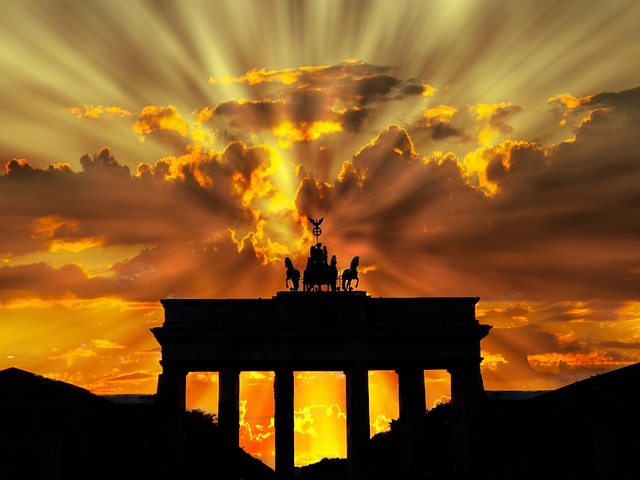# The Intersection of Imagination and Technology: Discovering the World of AI-Generated Art
The art world has long been a realm where imagination flourishes, but recent advancements in technology are reshaping how we create, perceive, and interact with art. Artificial Intelligence (AI) is at the forefront of this transformation, offering new tools and possibilities that challenge traditional notions of creativity. As artists embrace AI as a collaborator rather than a mere tool, the lines between human creativity and machine-generated outputs are becoming increasingly blurred.
## The Evolution of AI in Art Creation
Historically, art has been a deeply human endeavor, rooted in personal expression and cultural context. However, the introduction of AI into the creative process has sparked a revolution. Machine learning algorithms, particularly those that utilize neural networks, can analyze vast datasets of existing artworks to generate new pieces that reflect a blend of styles and influences. These algorithms can mimic the brushstrokes of Van Gogh, the color palettes of Monet, or even the abstract forms of contemporary artists.
One of the most notable developments in AI-generated art is the rise of Generative Adversarial Networks (GANs). A GAN consists of two neural networks: a generator that creates images and a discriminator that evaluates them. This dynamic creates a feedback loop where the generator continually improves its outputs based on the discriminator’s assessments. As a result, the technology produces increasingly sophisticated and visually compelling artworks. The ability of AI to learn from a diverse array of artistic styles enables it to create works that are not only novel but also resonate with human aesthetics.
Moreover, AI tools like DALL-E and Midjourney have democratized art creation, allowing individuals without formal artistic training to produce high-quality images. By simply inputting descriptive text prompts, users can generate intricate visuals that reflect their ideas. This accessibility has opened up new avenues for creativity, enabling a broader range of voices to contribute to the artistic landscape.
## The Role of the Artist in AI-Driven Art
While AI is transforming the mechanics of art creation, the role of the artist remains crucial. Rather than replacing human creativity, AI serves as a collaborator that enhances the artistic process. Artists are now tasked with curating and guiding the output of AI, making critical decisions about which generated pieces to refine and display. This partnership fosters an environment where human intuition and machine efficiency coexist, leading to innovative results.
A significant aspect of this collaboration lies in the artist’s ability to infuse personal vision into AI-generated works. By providing specific prompts, artists can steer the AI toward outcomes that align with their conceptual goals. This interplay between human input and machine learning results in a unique synthesis of creativity, where the final artwork is a product of both human imagination and algorithmic processing.
Furthermore, the emergence of AI-generated art has prompted artists to reflect on the nature of creativity itself. Questions surrounding authorship, originality, and the definition of art are becoming increasingly pertinent. As AI systems generate works that can rival those created by humans, artists are challenged to consider what it means to be an artist in an age where machines can produce aesthetically pleasing outputs. This introspection can lead to deeper explorations of artistic identity and the value of human touch in the creative process.
## The Cultural Implications of AI Art
The rise of AI-generated art is not just a technological phenomenon; it carries significant cultural implications as well. As AI systems learn from existing artworks, they inevitably reflect the biases and trends present in the data they consume. This raises ethical concerns about representation, diversity, and the potential perpetuation of stereotypes in the art world. It is essential for artists and technologists to be mindful of these issues as they develop AI tools and datasets, ensuring that the outputs are inclusive and reflective of a broad spectrum of human experiences.
Moreover, AI-generated art challenges traditional art markets and institutions. Galleries and collectors are beginning to grapple with the question of value in a landscape where art can be produced at the click of a button. The uniqueness of a piece, once a cornerstone of its value, is now called into question when multiple iterations of a generated image can exist. This shift prompts a reevaluation of how art is valued and consumed, leading to new business models and distribution methods.
In addition, the integration of AI into the art world has the potential to foster collaboration across disciplines. Artists, technologists, and theorists can come together to explore the boundaries of creativity and innovation. As interdisciplinary projects emerge, they can inspire new forms of artistic expression and provoke critical discussions about the future of art in a technologically driven society.
## Conclusion: Embracing the Future of Art
The intersection of imagination and technology is reshaping the landscape of art in profound ways. AI-generated art is not merely a trend; it represents a fundamental shift in how we understand creativity and the role of the artist. As artists leverage AI as a collaborator, they are redefining the creative process and challenging conventional notions of authorship and originality.
While the cultural implications of AI in art are complex, they offer opportunities for growth and exploration. By engaging with these technologies thoughtfully, artists can navigate the challenges and embrace the possibilities that AI presents. As we move forward, the future of art will likely be characterized by a rich tapestry of human creativity and technological innovation, inviting us all to participate in a new era of artistic expression.

